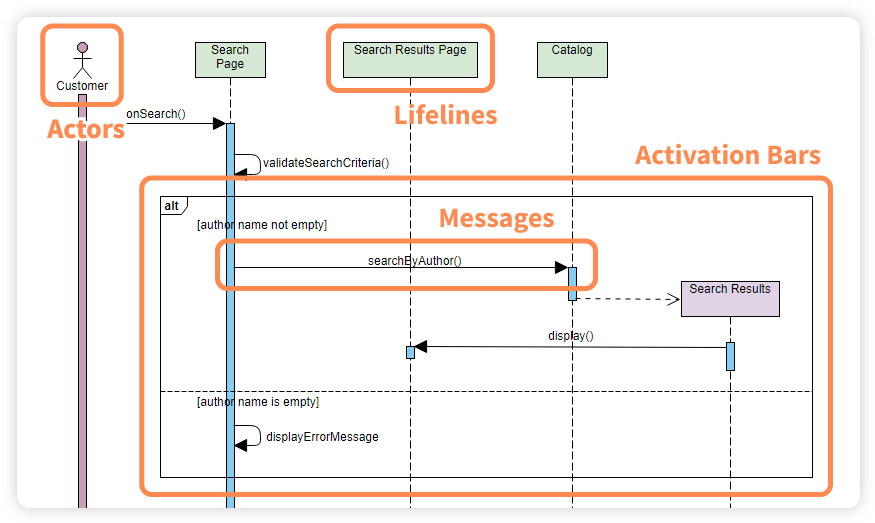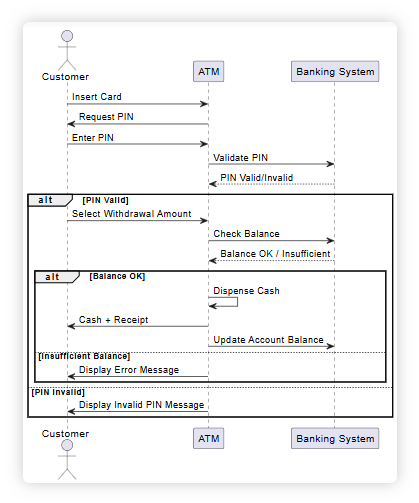Now Reading: What Is a Sequence Diagram? Beginner-Friendly Guide
-
01
What Is a Sequence Diagram? Beginner-Friendly Guide
What Is a Sequence Diagram? Beginner-Friendly Guide
Introduction to Sequence Diagrams
A sequence diagram is a type of UML diagram that shows how objects interact with each other over time. It focuses on the order of messages exchanged, making it one of the most practical tools for modeling system behavior.
By visualizing these interactions, sequence diagrams help teams understand not just what a system does, but how different components collaborate to achieve it.

Key Elements of a Sequence Diagram
Actors
Represent the people, systems, or external entities interacting with the system. For example, a Customer in an ATM withdrawal scenario.
Lifelines
Vertical dashed lines that represent the lifespan of an object or component during the interaction.
Messages
Horizontal arrows showing communication between lifelines, such as requests, responses, or signals.
Activation Bars
Rectangles placed on lifelines, representing the time an object is actively performing an operation.

Why Sequence Diagrams Matter
Sequence diagrams are widely used in software design because they:
- Clarify system behavior by showing the order of interactions
- Serve as a bridge between requirements and implementation
- Help identify responsibilities of different components
- Provide a shared understanding across stakeholders, developers, and testers
Whether in small applications or enterprise systems, they improve communication and reduce design errors.
Sequence Diagram Example
ATM Withdraw Cash Scenario
Imagine a customer withdrawing cash from an ATM:
- Customer inserts card → ATM requests PIN
- Customer enters PIN → ATM validates it
- Customer selects amount → ATM checks balance and dispenses cash
This scenario can be quickly captured in a sequence diagram, showing the customer, ATM interface, and banking system as interacting components.

Introduction to Sequence Diagrams
Traditionally, creating detailed sequence diagrams can be time-consuming. This is where AI-powered refinement and VP Online come together:
- Start simple: Sketch a basic diagram using actors and main interactions.
- Refine with AI: Use the Sequence Diagram Refinement Tool to expand it into detailed MVC components
- Customize in VP Online: Open the refined diagram in VP Online’s editor to adjust, document, or integrate with other UML diagrams.
This workflow makes sequence diagrams not only easier to create but also more powerful for system architecture design.

